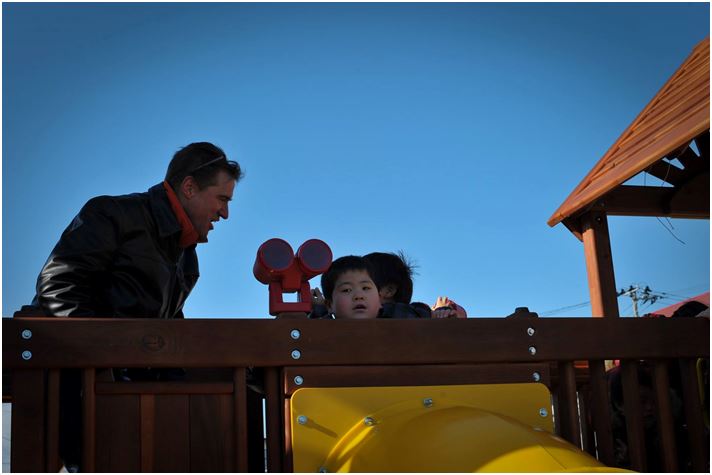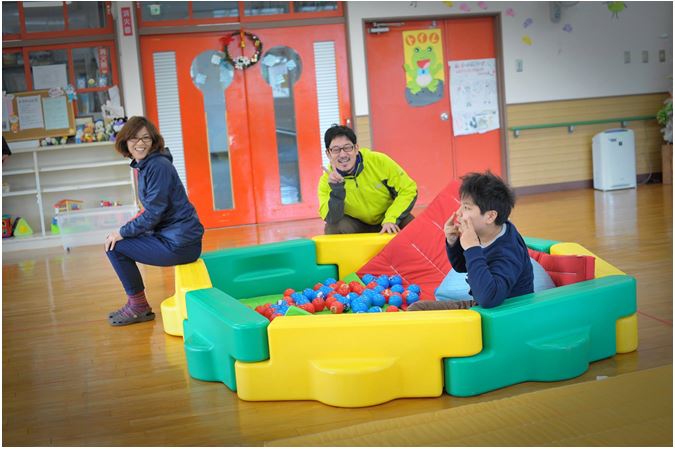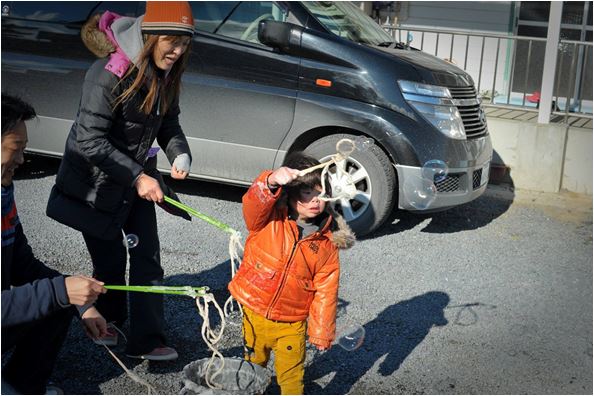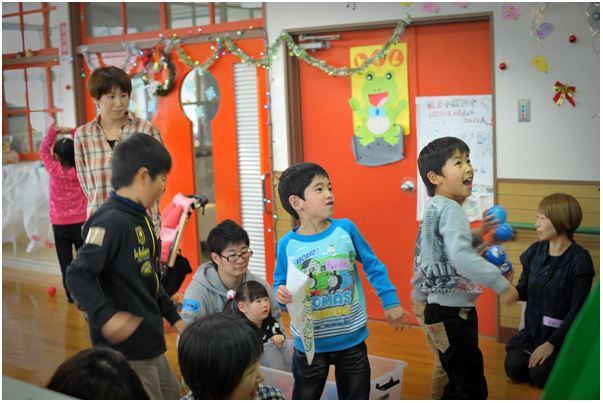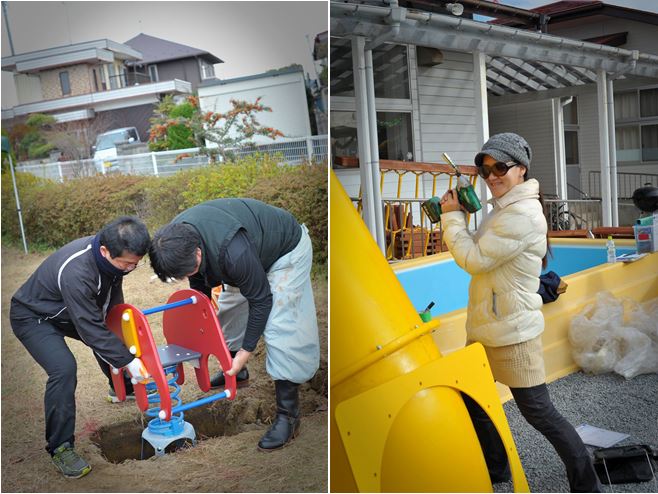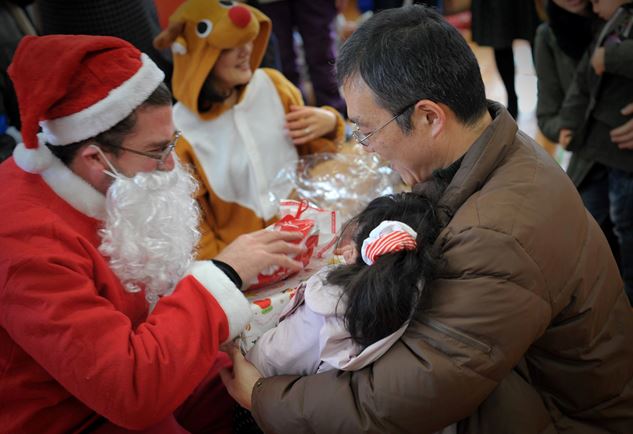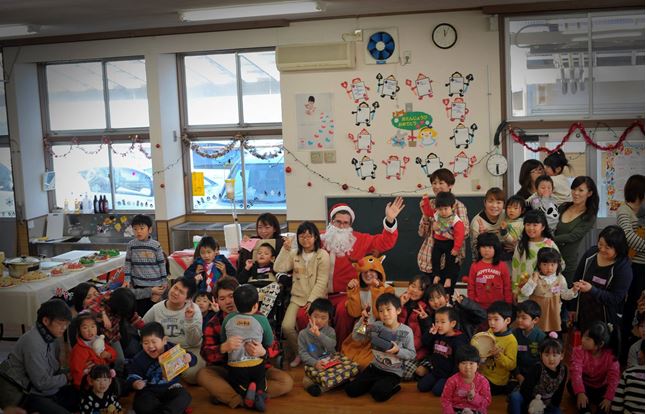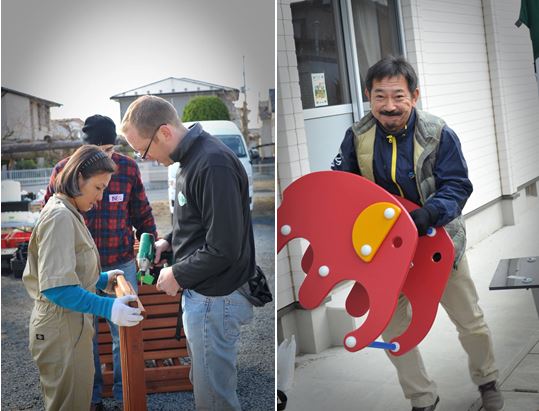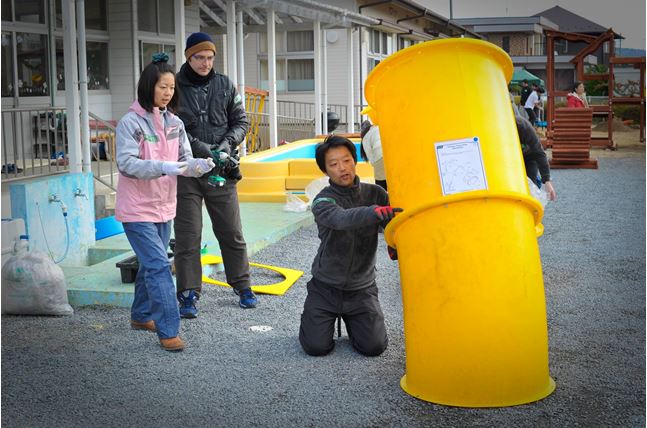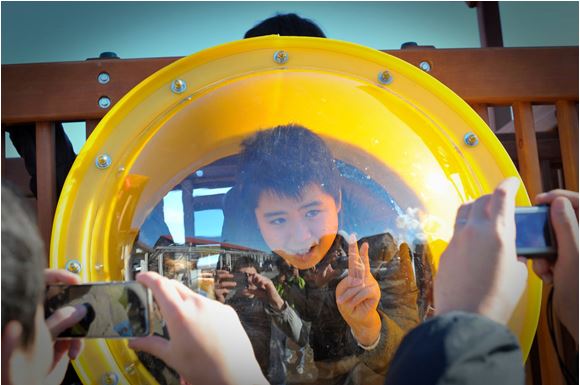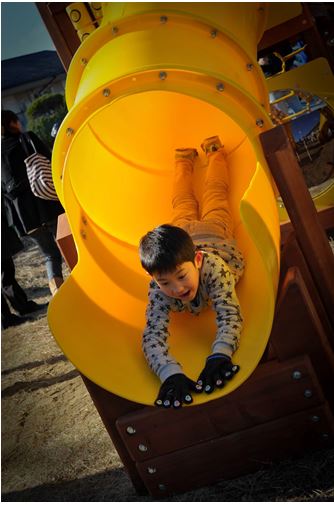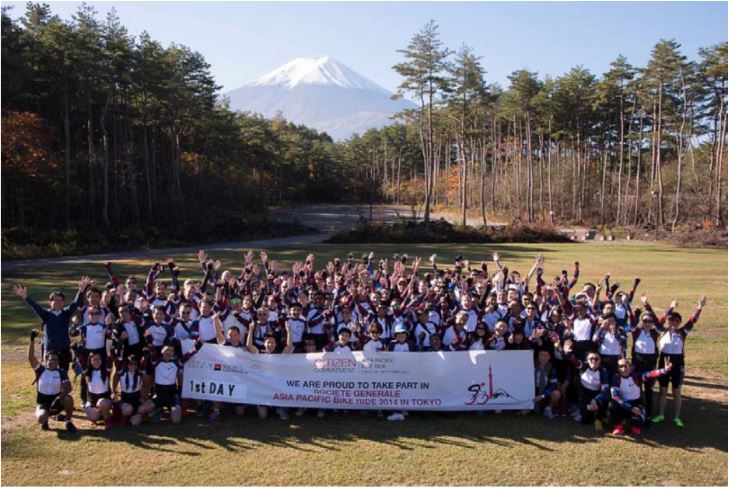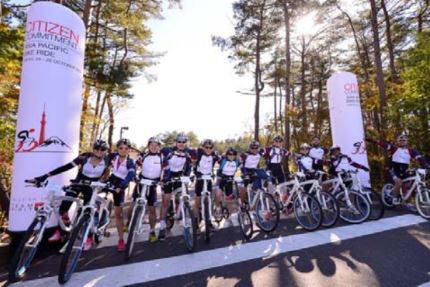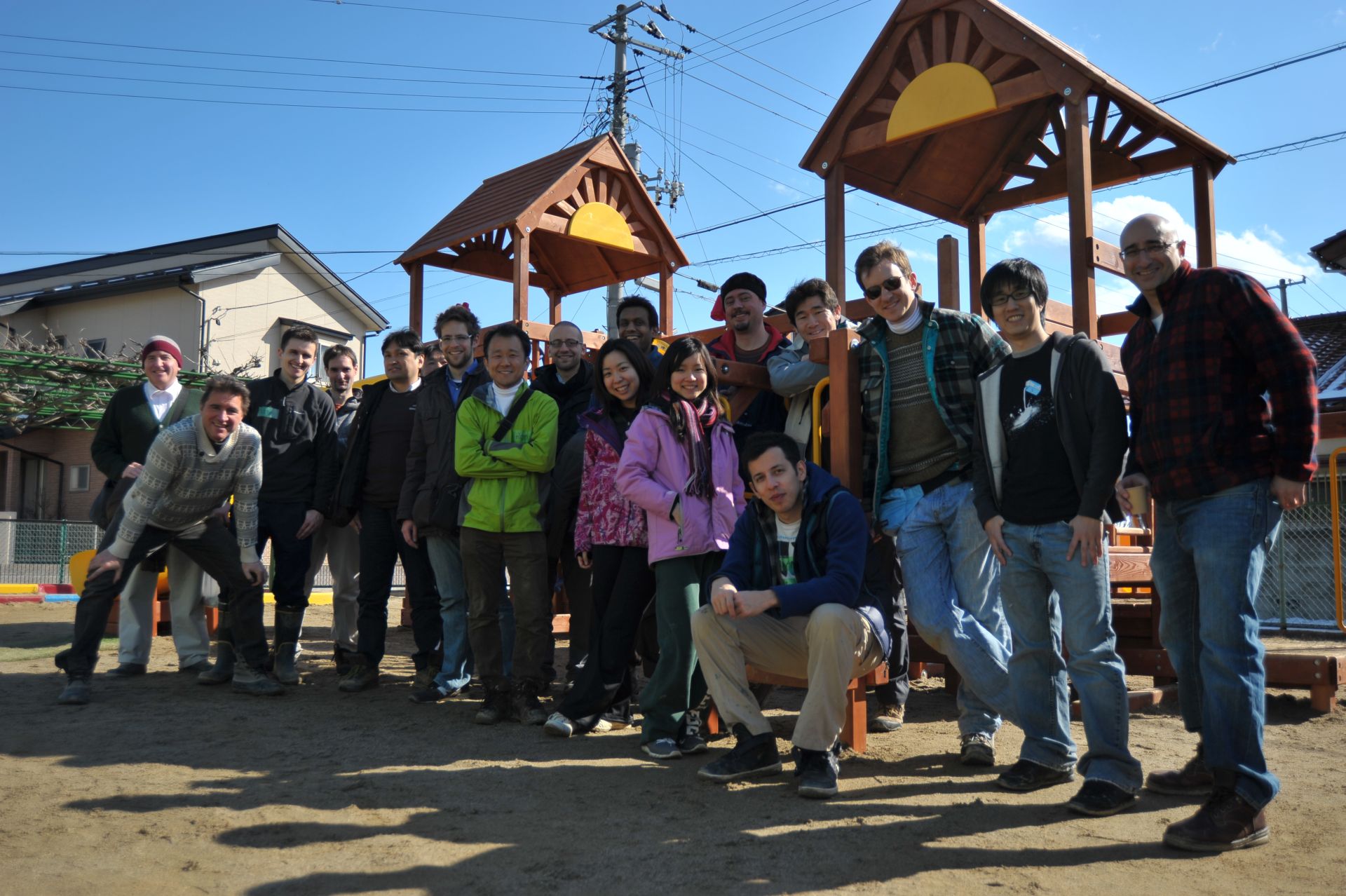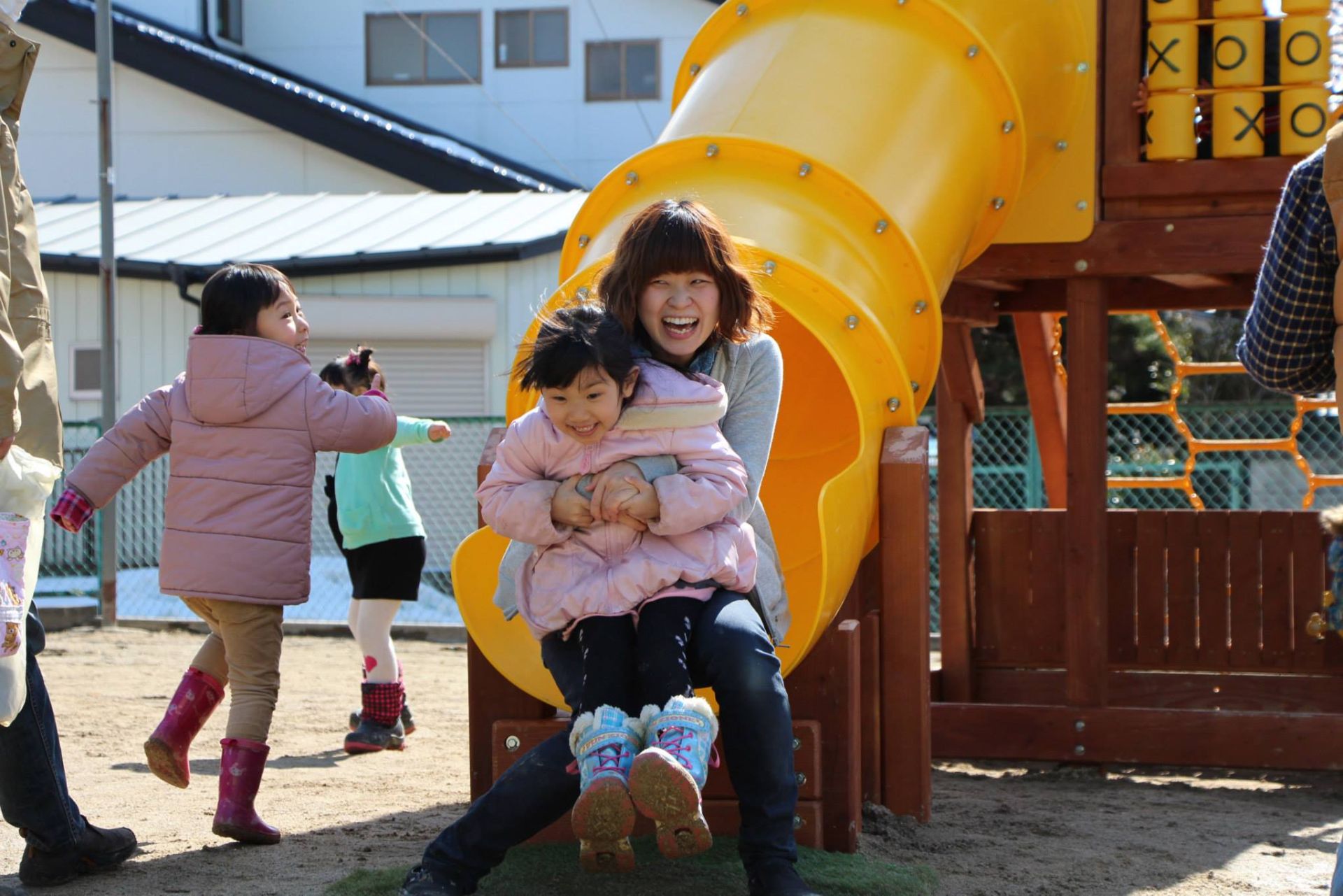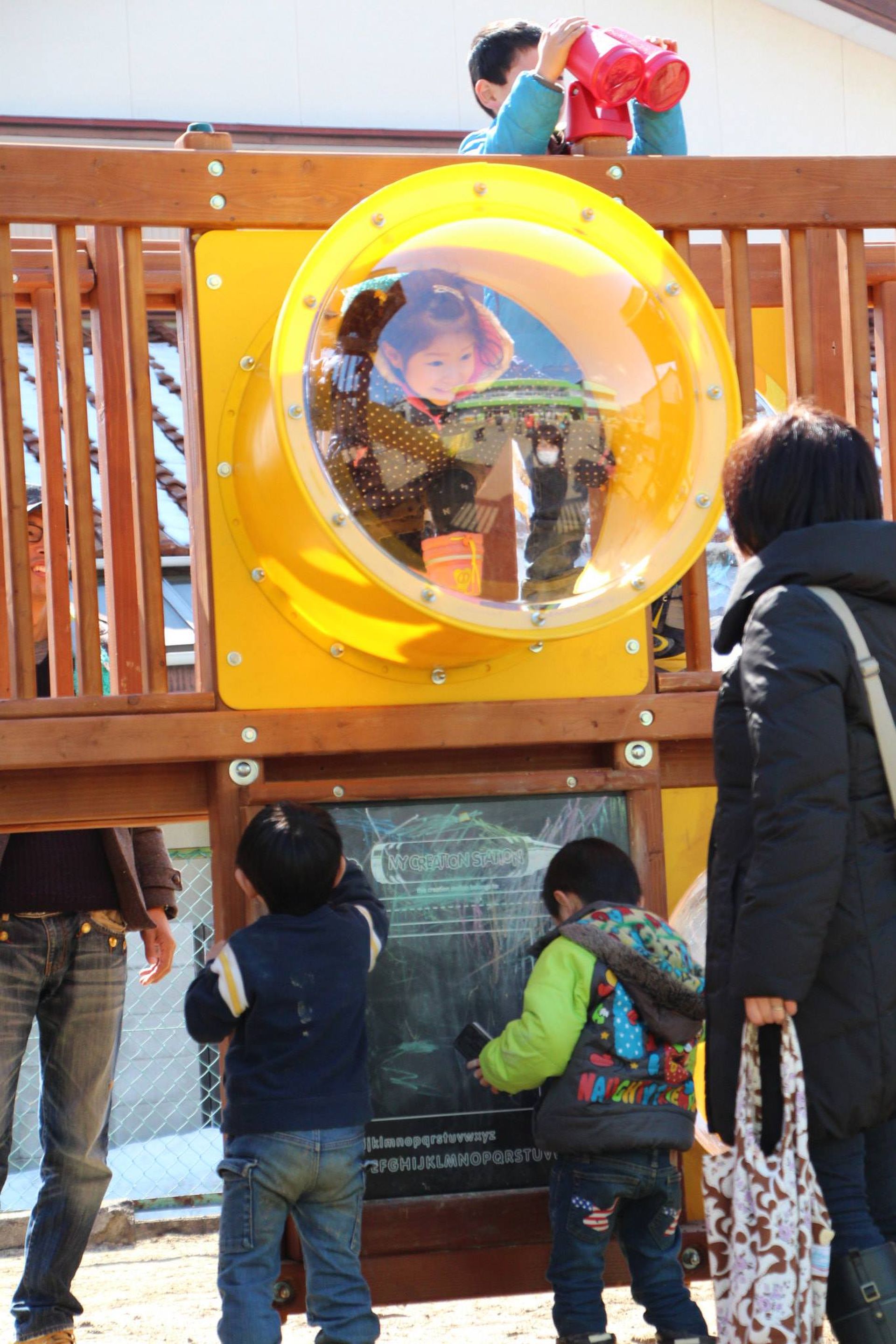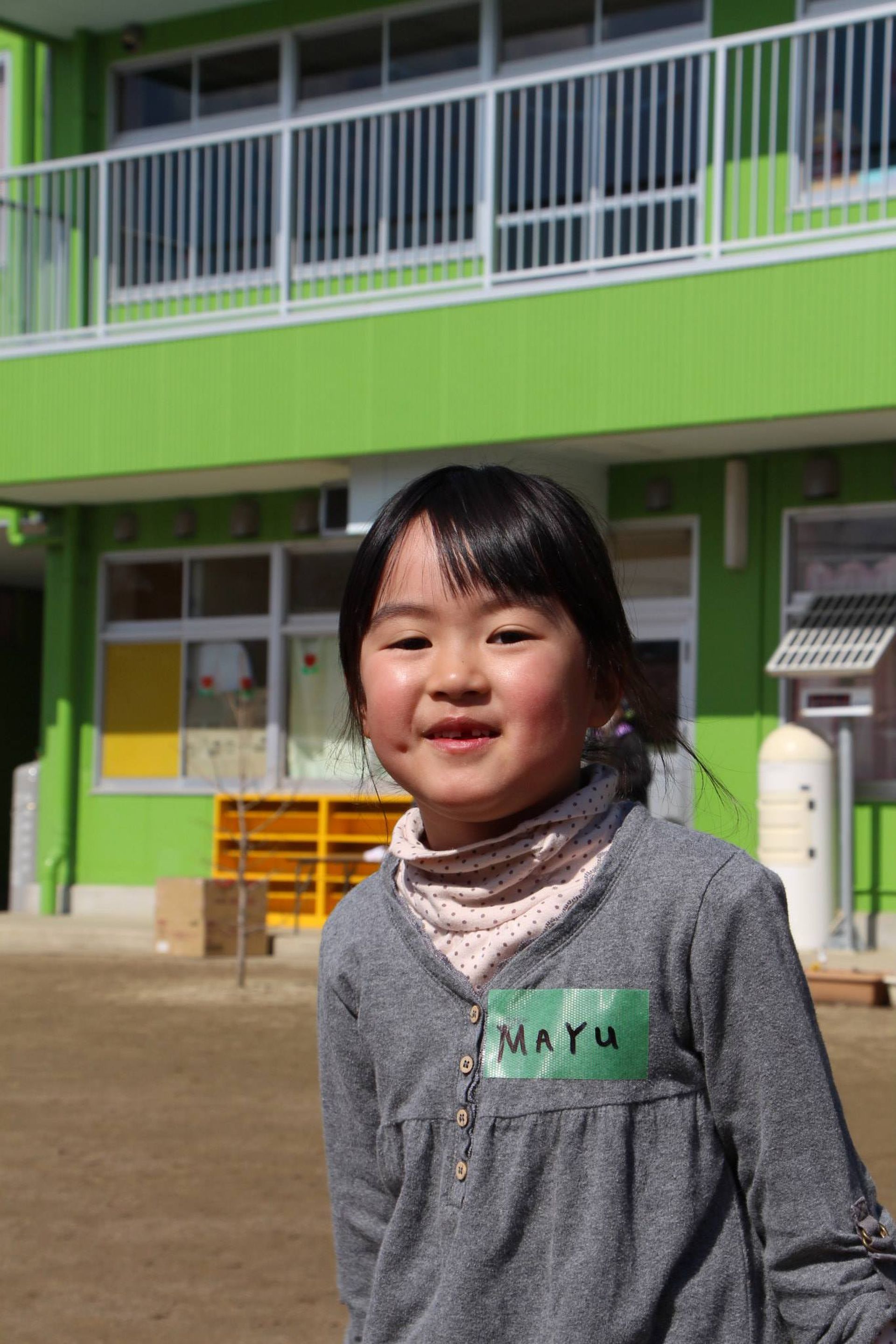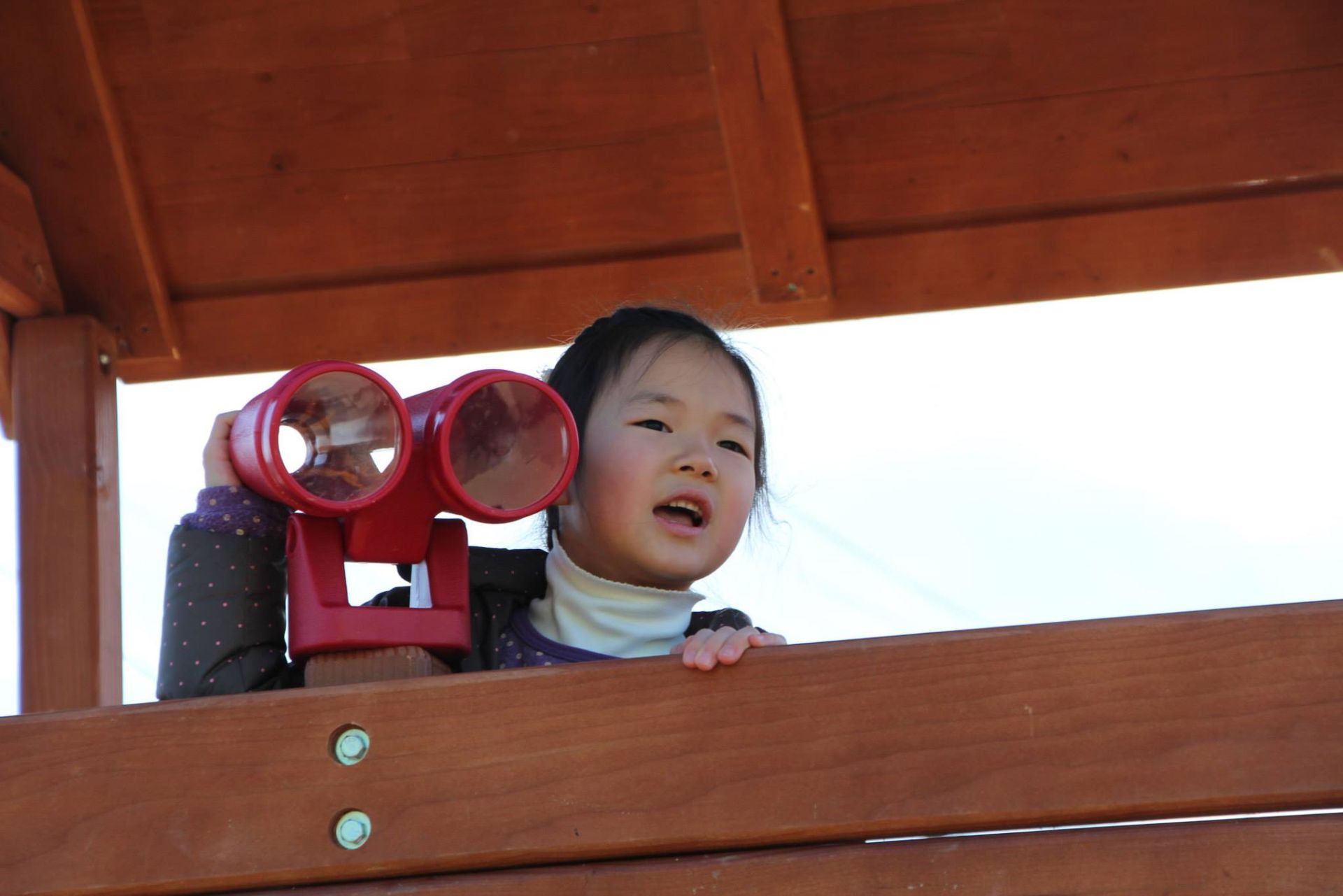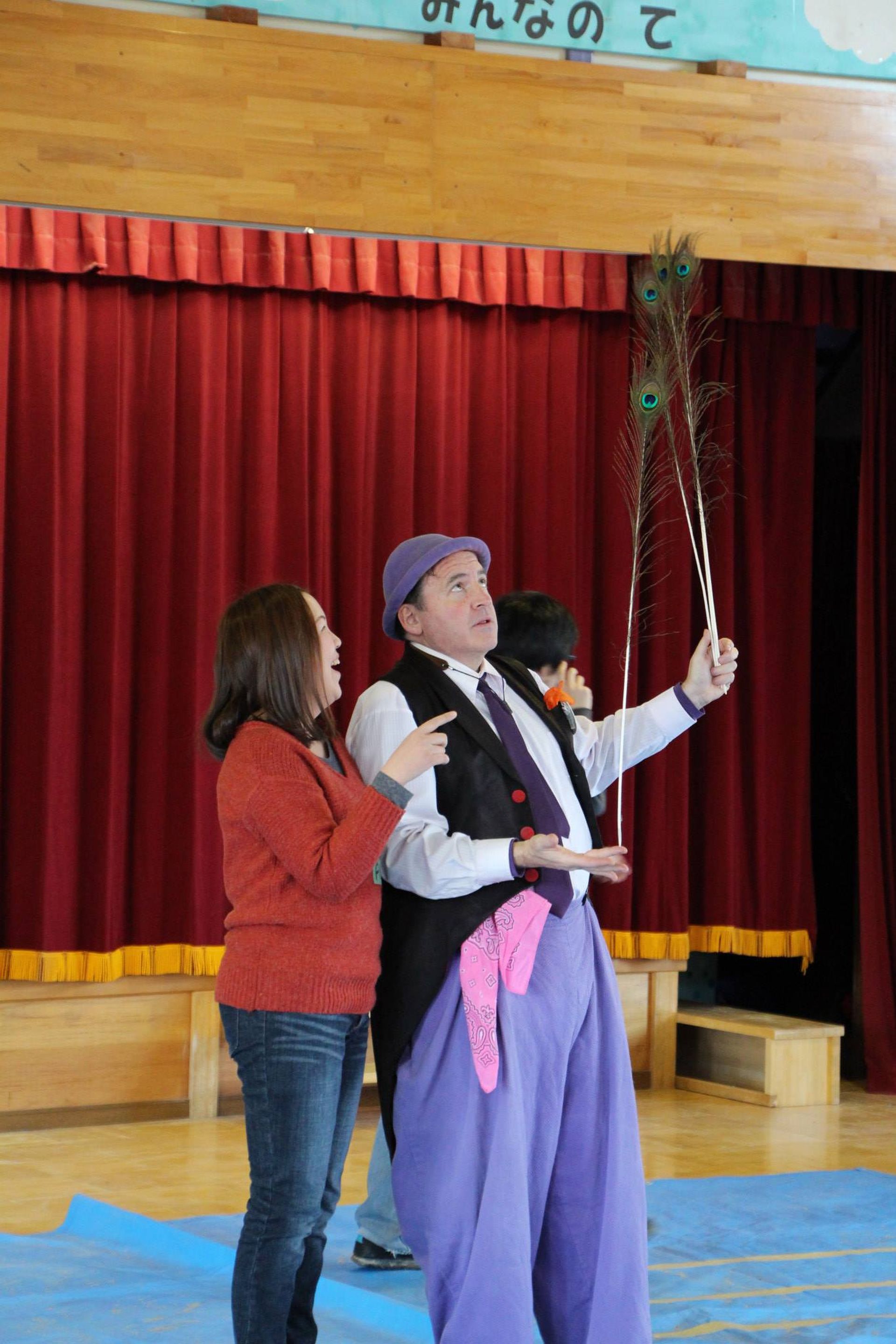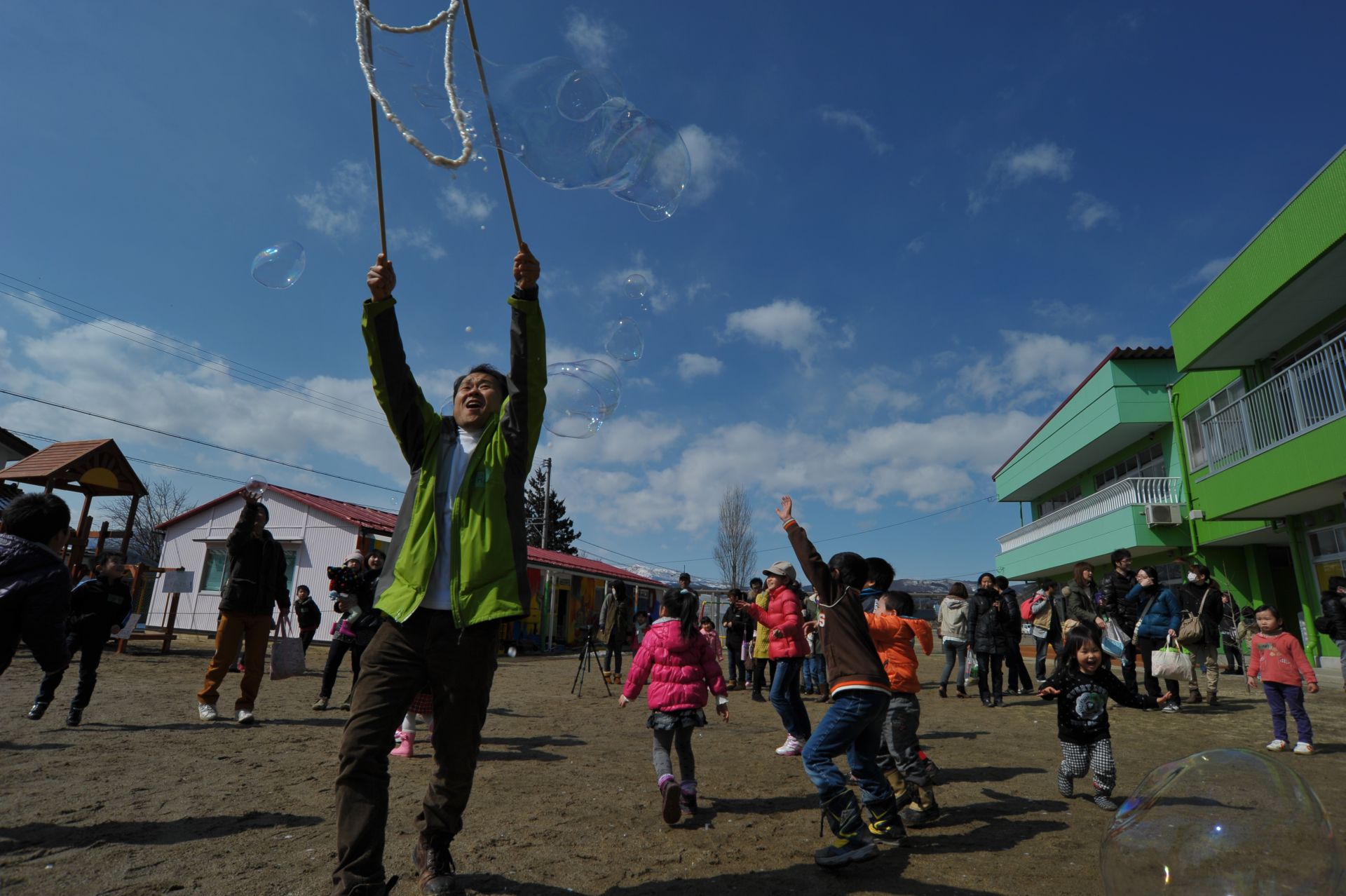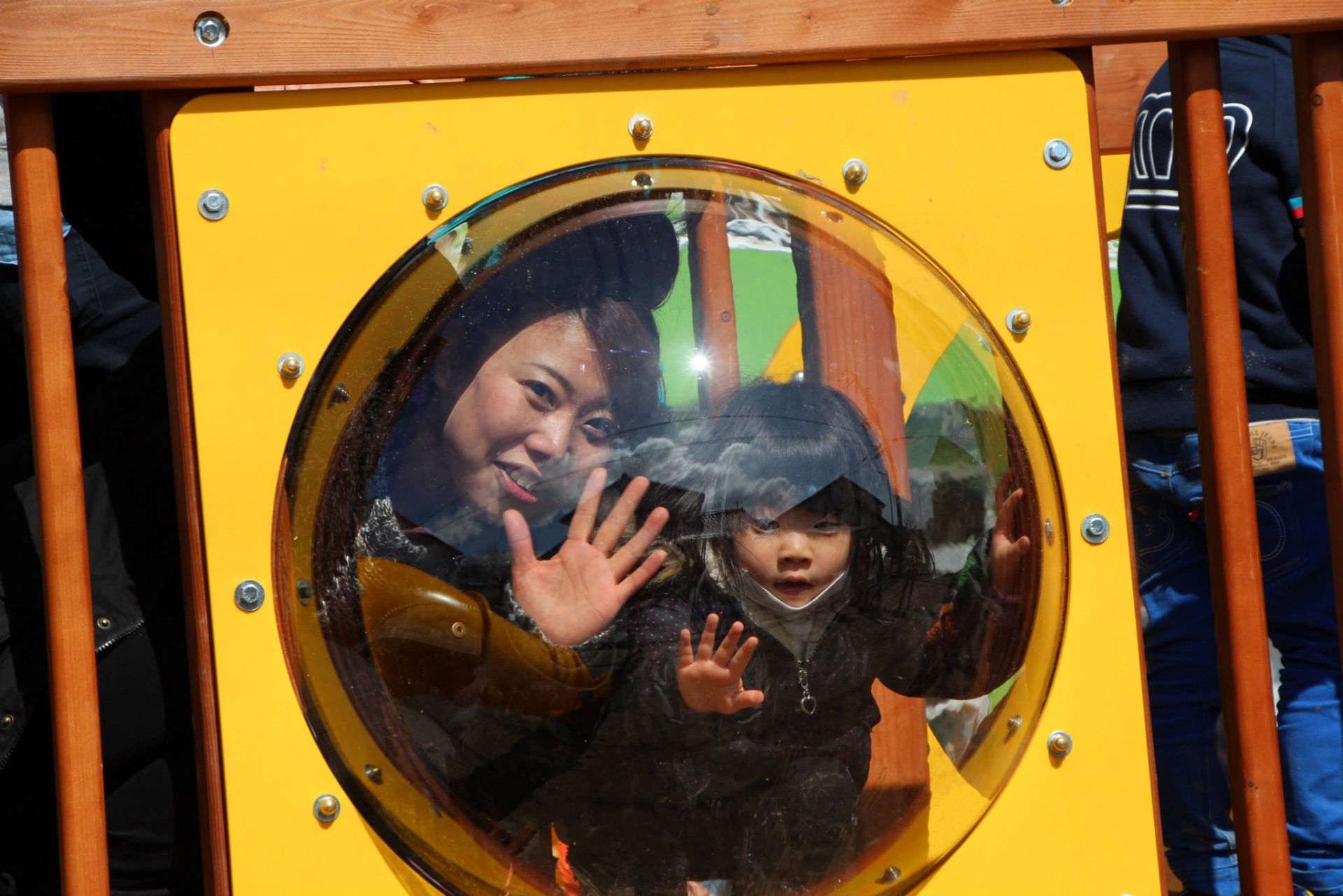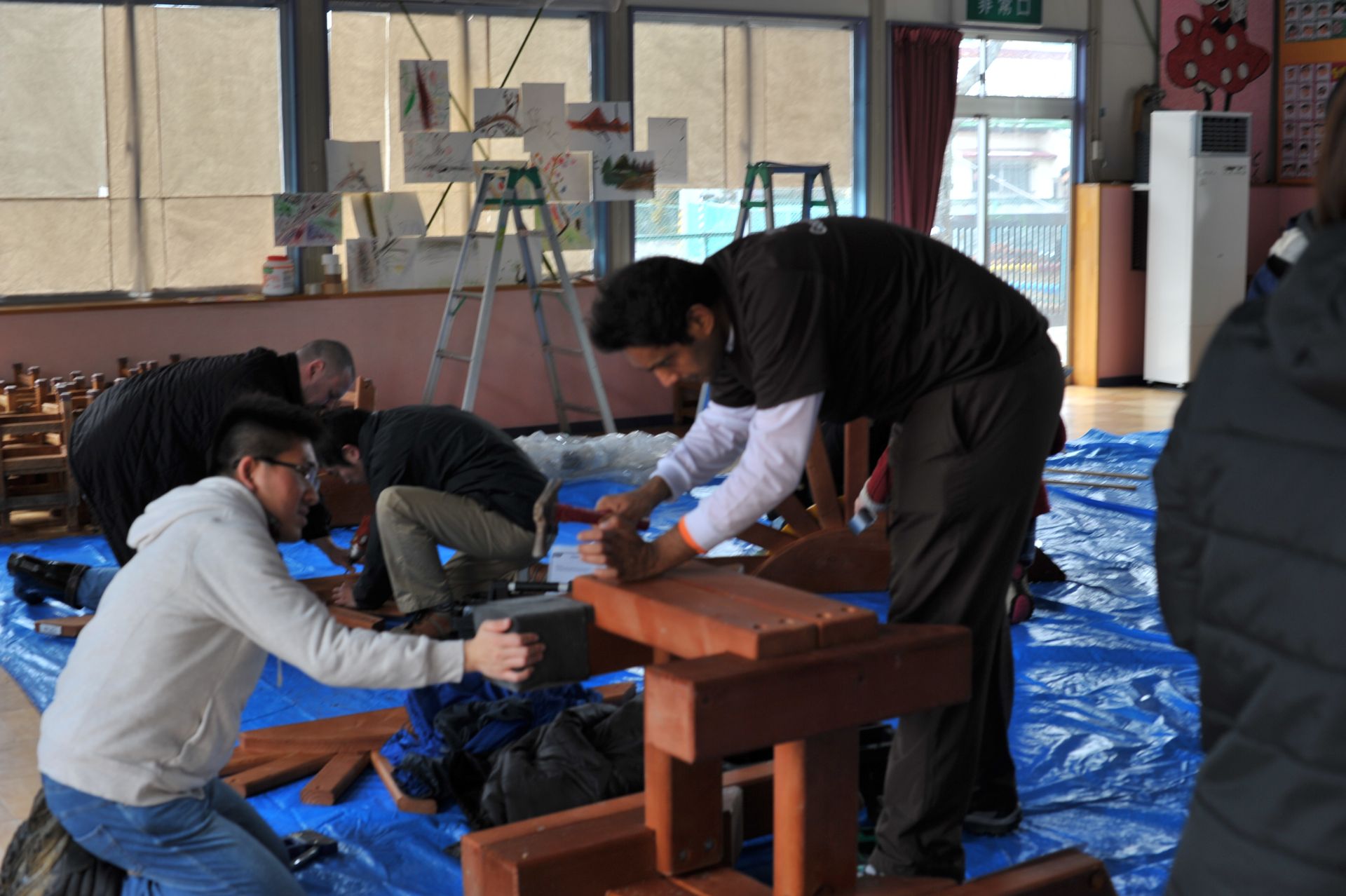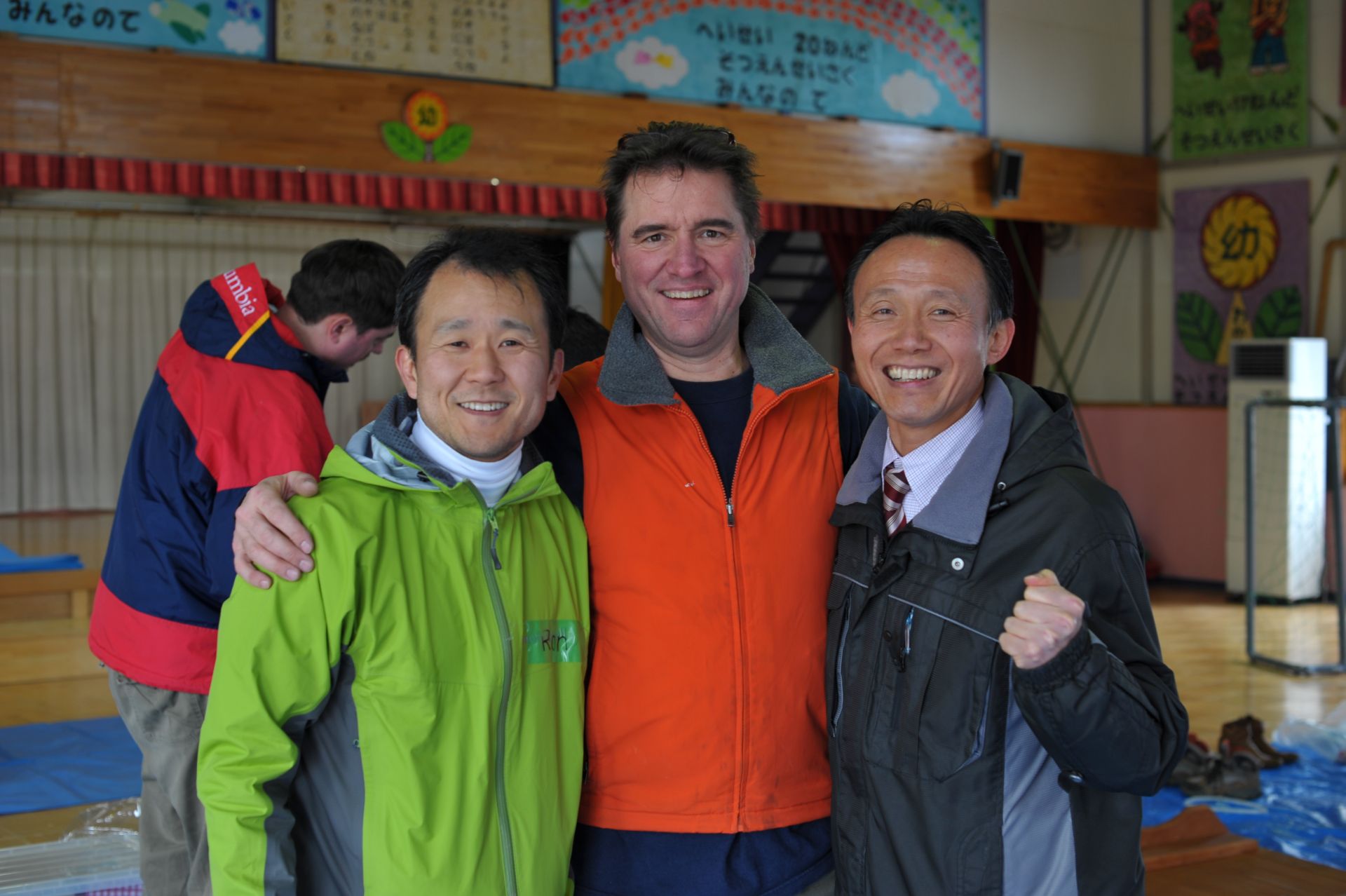By Ron Choi
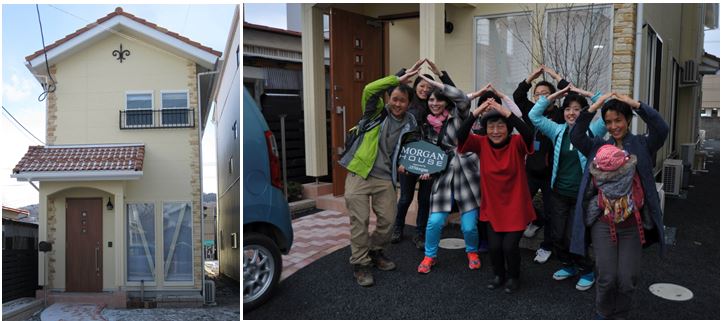 Figure 1. Morgan House, which completed in February 2014, serves as permanent housing for seven mentally and physically handicapped adults in Ishinomaki, Miyagi prefecture, Japan.
Figure 1. Morgan House, which completed in February 2014, serves as permanent housing for seven mentally and physically handicapped adults in Ishinomaki, Miyagi prefecture, Japan.
Keiko Sugawara-san is one of those remarkable people one sometimes comes across in life; an extraordinary person of immense character and resolve that allow one to do incredible things for the good of the world. We were introduced to her by Michael Anop of Playground of Hope. Michael described her as Mother Teresa of Ishinomaki. She needed help in relocating people under her care in temporary facilities to permanent housing. We made a visit to her operation in Watanoha area of Ishinomaki in Miyagi prefecture. It was a trip of unequaled emotion and inspiration.
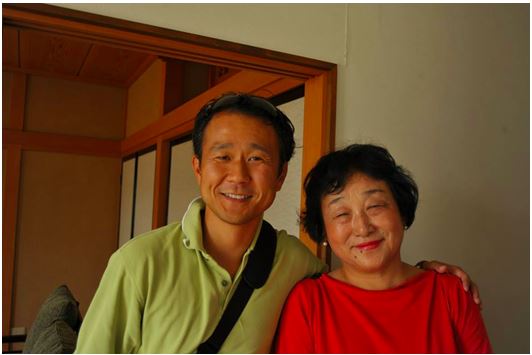 Figure 2. Keiko Sugawara-san during our first visit to Ishinomaki
Figure 2. Keiko Sugawara-san during our first visit to Ishinomaki
She and her NPO, Yumeminosato, have been providing support to the handicapped children and adults in Ishinomaki for years. She ran a school for mentally challenged children and provided housing for mentally challenged and mentally ill adults. Her organization also ran daycare centers where mentally handicapped can stay during the day, and provided them with day jobs such as working at the farms where they can receive wages. She took in people other organizations turned away — the hardest cases, some with unnerving violent history. Her calling was that of a sacrifice and devotion; to care for the powerless and the abandoned. Only people like her would care for people like this. Her operation of love and sacrifice thrived in Ishinomaki until the tsunami of March 11th, 2011, washed it all away.
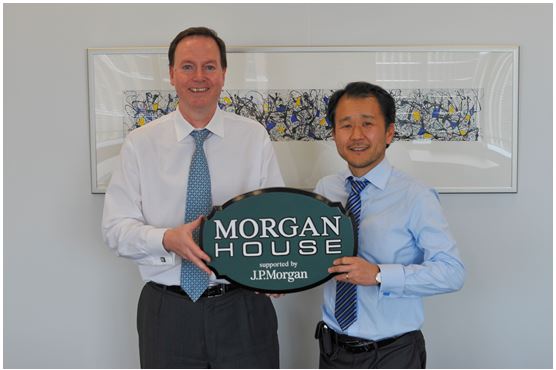 Figure 3. J.P. Morgan team pictured here with Morgan House sign made in New England.
Figure 3. J.P. Morgan team pictured here with Morgan House sign made in New England.
The most remarkable thing wasn’t that Sugawara-san and her team cared for the abandoned and powerless. It was that they fought back against the hopeless situation of 3.11 tsunami and managed to build their operation back up. By the time we made our trip to see her in July 2013, she and her organization once again had a thriving operation caring for the Down syndrome children and housing and caring for the handicapped adults. She had reopened the housing for the elderly mentally challenged adults. She acquired funding, which we are sure she had to go extraordinary length to secure, to build a short-term stay home, Minnano-yumehiroba, for the mentally challenged. Her schools and daycare centers were fully operating with her devoted staff. We met the children and adults under her care and saw that they were treated with respect, professional care, and much needed love.
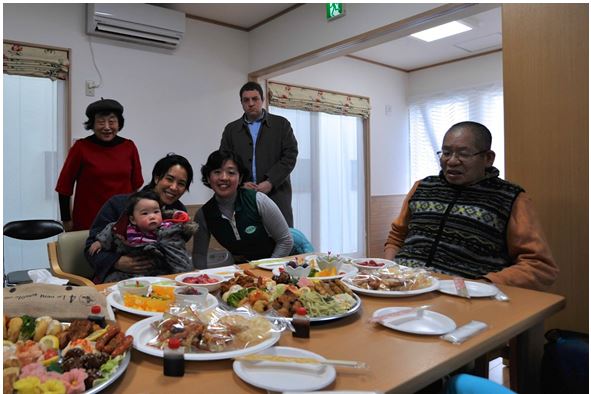 Figure 4. Our volunteers had lunch with the residents of Morgan House.
Figure 4. Our volunteers had lunch with the residents of Morgan House.
Sugawara-san still had a number of mentally challenged adults in temporary housing that the government provided for her last two years. She was told to move them to permanent housing. She was given an amount that would have been sufficient had it not for the tsunami that doubled and tripled the material and labor cost of construction around the region. She could not build a place to accommodate seven adults with the grant money she was given. She and her organization were in a bind.
Unbeknownst to Sugawara-san, JPMorgan Chase Foundation had approved funding in late 2012 to help relocate the people in temporary housing compounds to more livable living space. This project, aptly named Morgan House Project, NADIA and J.P. Morgan volunteers were to help fund and facilitate relocation of the people in most dire circumstances in temporary housing.
After a long consideration, we had received approval from the NADIA board and J.P. Morgan to proceed with funding to build a new house for the 7 adults under Sugawara-san’s care. We believed it was likely to be one of the most worthwhile projects we had ever engaged in. The construction of the house and the move was completed in February 2014. Our volunteers visited the house on March16th, 2014. The place was absolutely beautiful. Painted bright creamy yellow tone white paint on the outside, it really lit up the neighborhood. Once inside, we immediately felt the warmth of the place. We met the residents who recently moved in, and had lunch together. Joji Hiratsuka, NADIA chairman, and I visited the house again on December 14th, 2014. Morgan House had seven mentally or physically handicapped residents as planned.
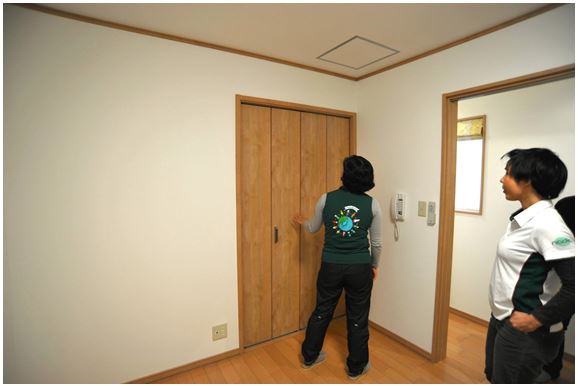 Figure 5. Our volunteers checking out the rooms in Morgan House.
Figure 5. Our volunteers checking out the rooms in Morgan House.
It was a long journey for some of the volunteers as it took 20 months from the initial fundraising activities to the completion of the house. Countless weekly strategy meetings, phone calls, fact-findings, and numerous document preparations were in the end all worth it.
There were many who have helped along the way from planning to preparing and translating documents by the NADIA and J.P. Morgan volunteers — Morgan Knight, Naomi Koyama, Sakiko Matsuoka, Joji Hiratsuka, Tak Ishikawa, Ayako Kurayabashi, Thor Taku McWilliams, Laureline Gatellier and Ron Choi — to pro-bono lawyers, Jean Luyat and Yuko Inui, from Orrick, Herrington & Sutcliffe who generously gave their time to draft the legal documents. Many of the senior executives of J.P. Morgan also got involved in lending a hand in the application for funding, getting approvals and expediting the process.
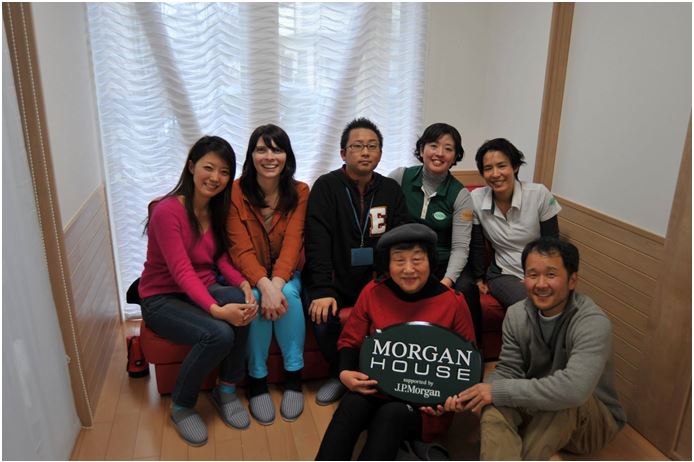 Figure 6. J.P. Morgan and NADIA volunteers posing with the Morgan House sign inside the completed house.
Figure 6. J.P. Morgan and NADIA volunteers posing with the Morgan House sign inside the completed house.
The Morgan House Project Team
NADIA has formed partnerships with other NPOs in the region to identify the people in need to help them improve their living situation. NADIA will execute the program in providing funding, volunteer labor and materials.
J.P. Morgan (http://www.jpmorgan.co.jp/ http://www.jpmorgan.com/) has provided sole funding for this project through its charitable foundation. In addition to the funds, J.P. Morgan supported this effort with its well-established employee volunteer program through its Corporate Social Responsibility and Philanthropy Committee organizations.
The Morgan House Project is a direct response to ever-mounting problems in temporary housing units and in keeping with NADIA’s original charter to bring back normalcy to the affected region. NADIA has been committed to make a difference in Tohoku since the very beginning of the disaster relief efforts to the 3.11 disaster. We aim to not only help the people affected, but also bring awareness of the on-going needs in Tohoku after more than three years after the devastating natural disaster.
 ain this year, we have successfully organized one month home stay program for children living in Fukushima, “Fukushima kids in Italy 2014”.
ain this year, we have successfully organized one month home stay program for children living in Fukushima, “Fukushima kids in Italy 2014”.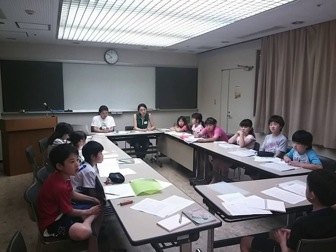
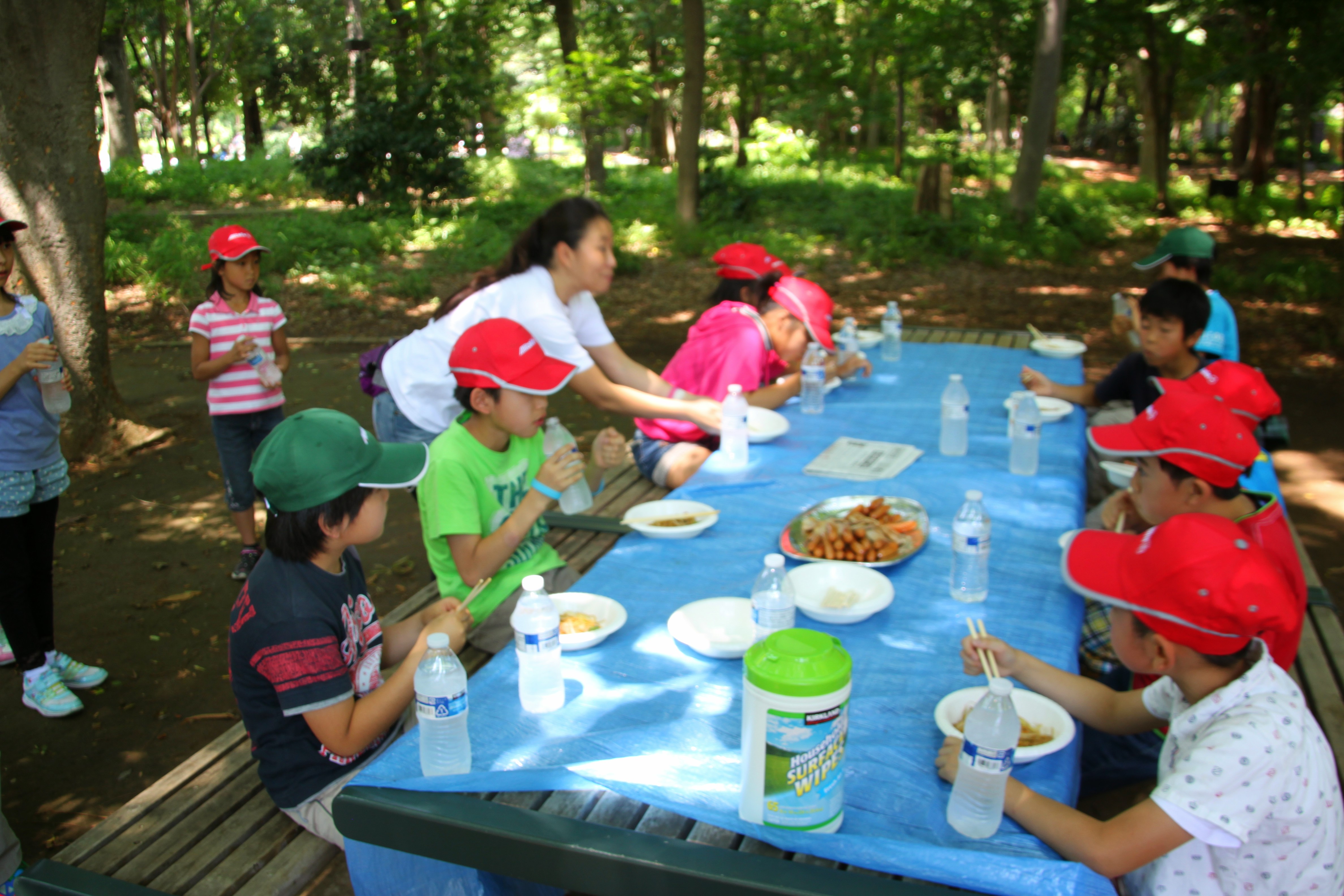
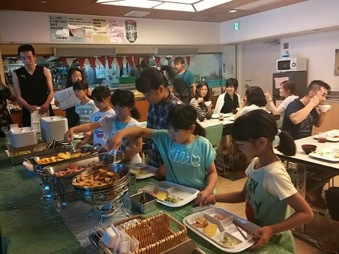 Through training camp as well as several orientation sessions, children learnt Italian language, learnt about Italian history and culture, got used to sleep without their parents and used to do daily things by themselves. By the time of the departure at Narita airport, all children learnt how to introduce themselves, how to count numbers, and how to express their emotion in Italian!
Through training camp as well as several orientation sessions, children learnt Italian language, learnt about Italian history and culture, got used to sleep without their parents and used to do daily things by themselves. By the time of the departure at Narita airport, all children learnt how to introduce themselves, how to count numbers, and how to express their emotion in Italian!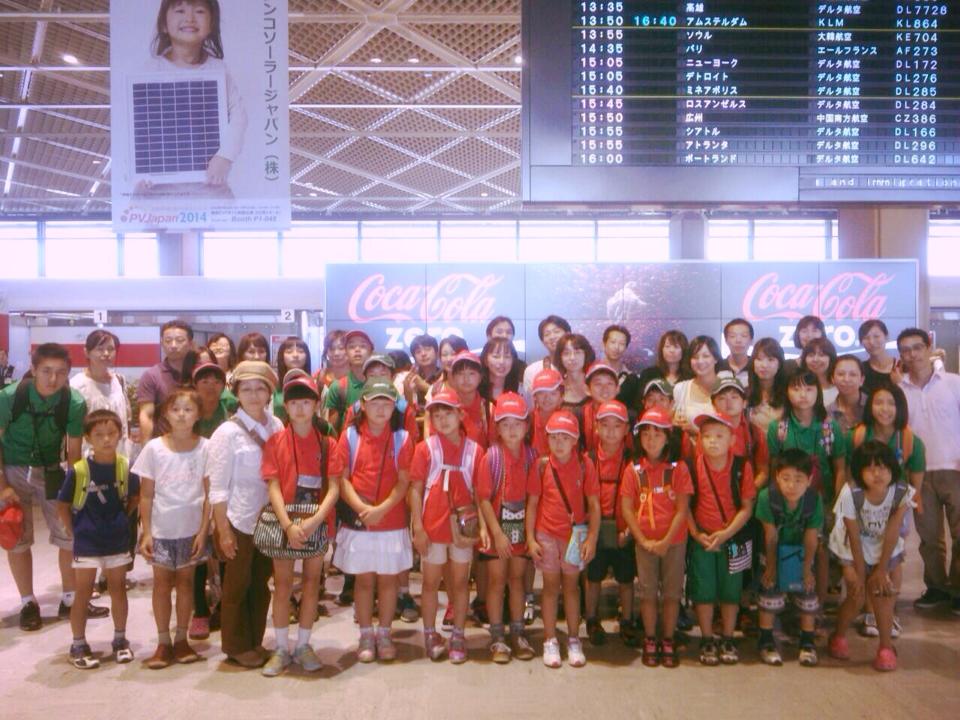
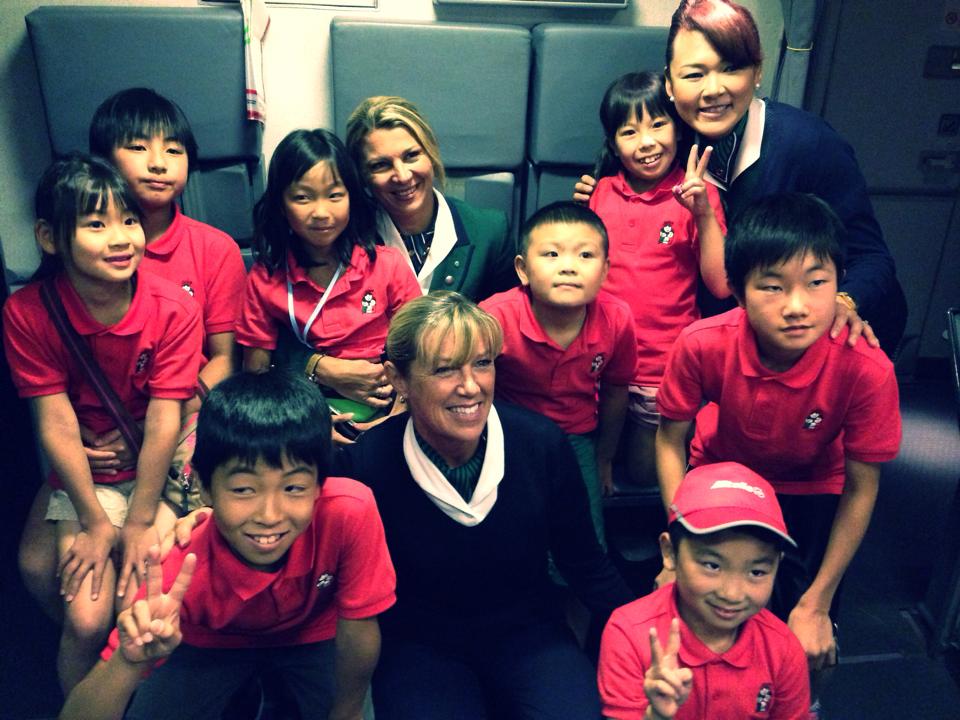 On Departure at Narita airport, Italy here we come!
On Departure at Narita airport, Italy here we come!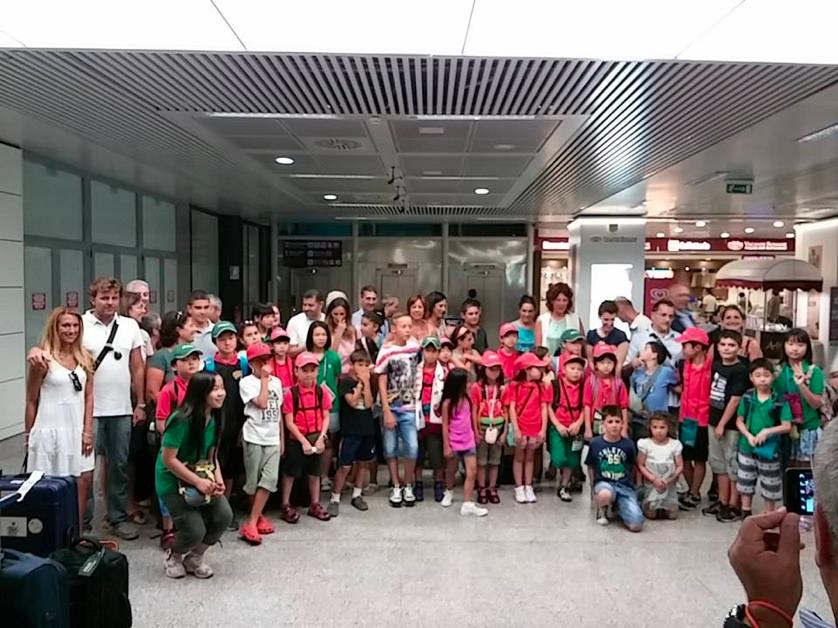 On arrival at Rome airport, welcomed by host families
On arrival at Rome airport, welcomed by host families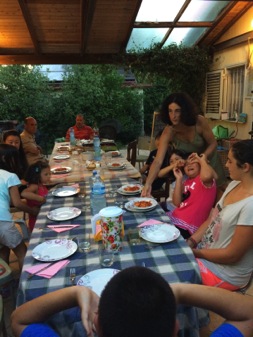
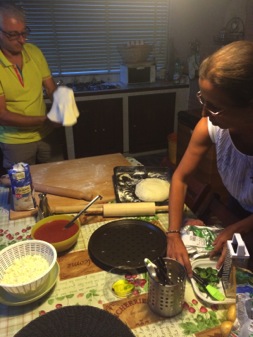
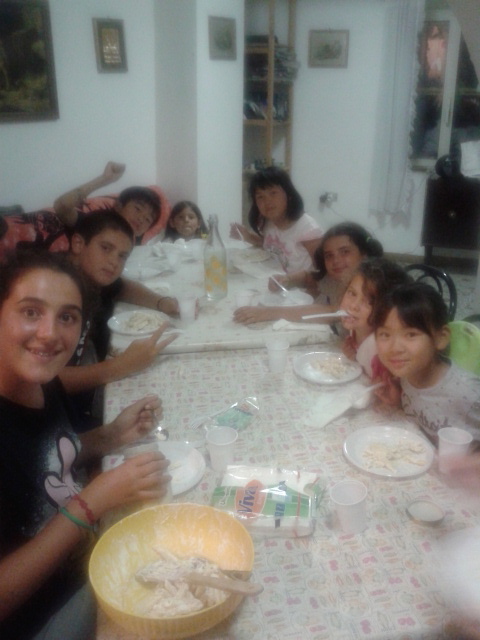
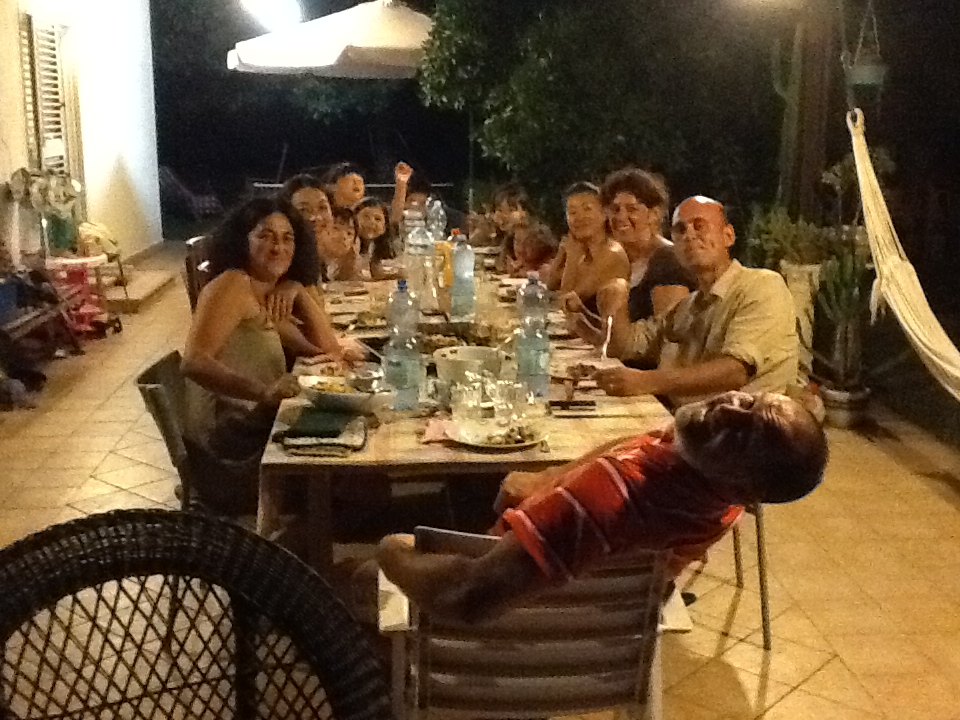 They loved Mamma’s pasta, homemade Pizza, having a family dinner on a long table
They loved Mamma’s pasta, homemade Pizza, having a family dinner on a long table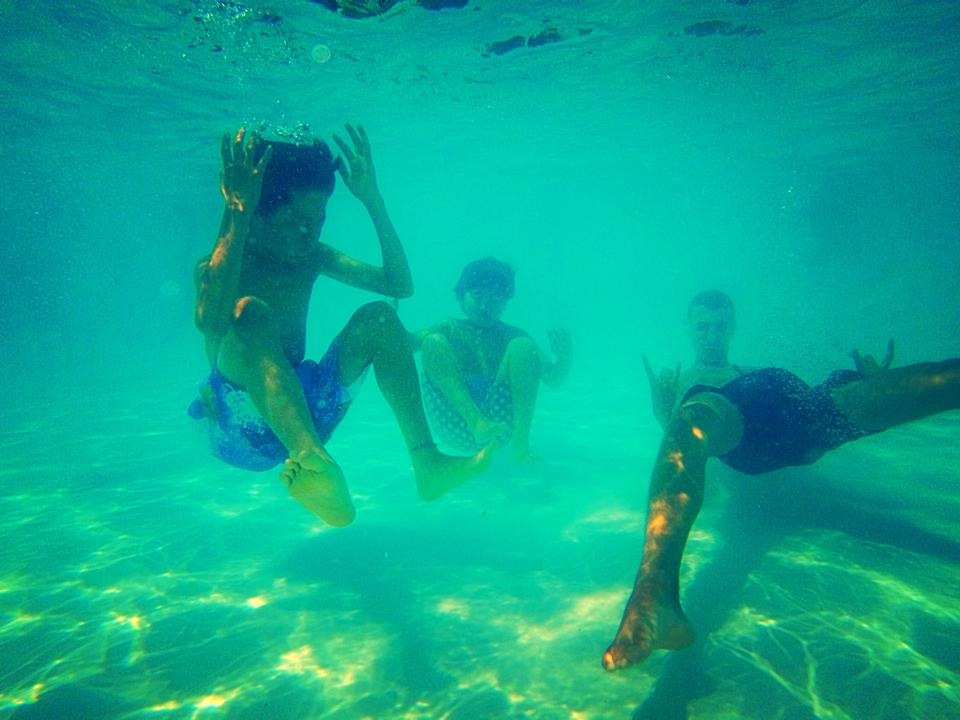
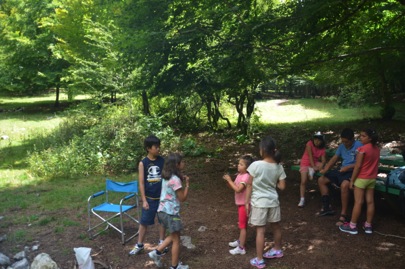 Everyday they played in the park, swam in the ocean until dark
Everyday they played in the park, swam in the ocean until dark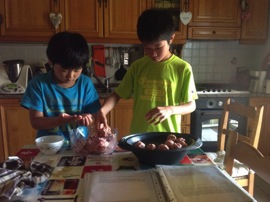 Some learnt Italian dishes from host mother and when they returned to Fukushima they cooked for their family.
Some learnt Italian dishes from host mother and when they returned to Fukushima they cooked for their family.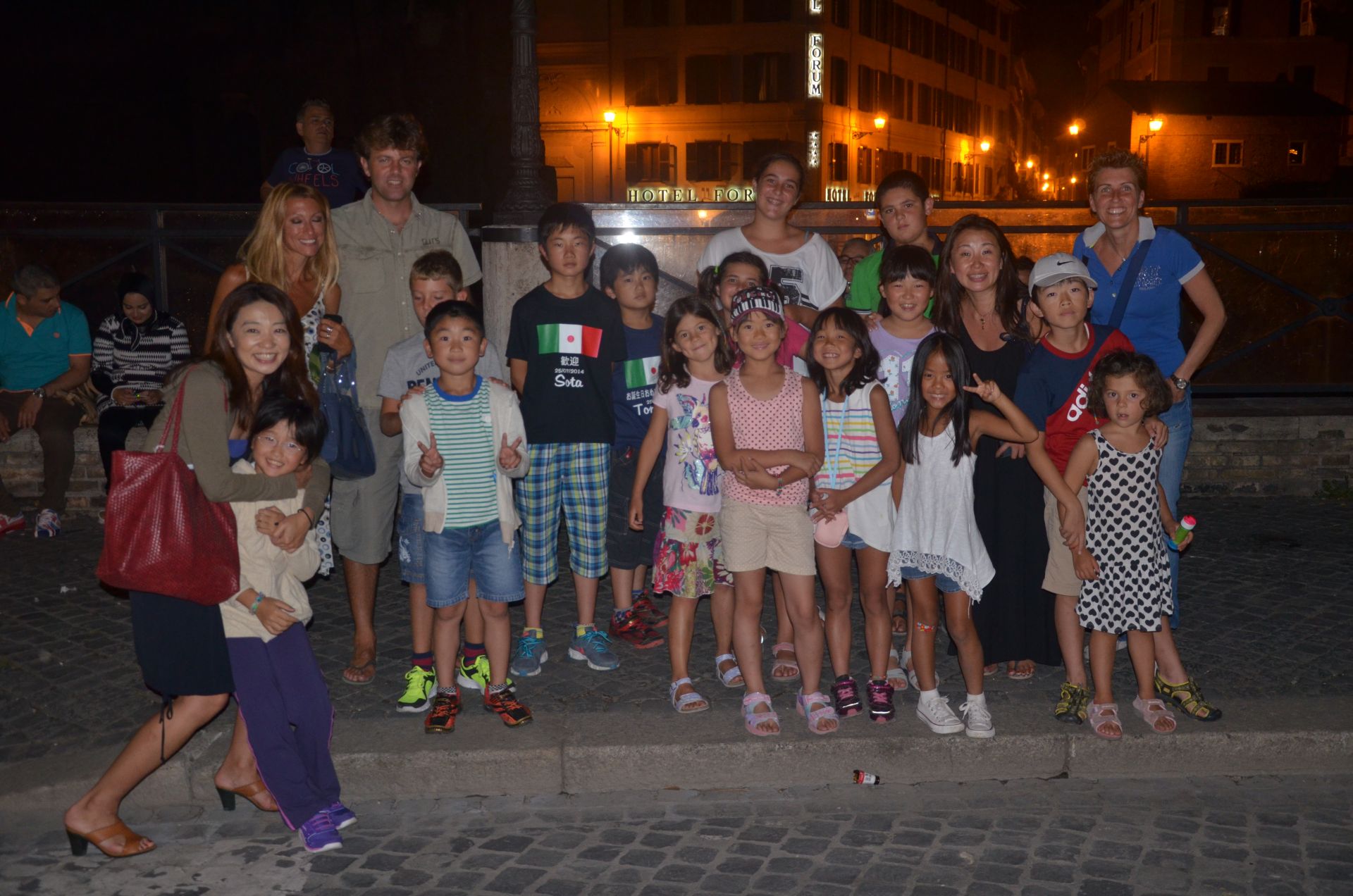
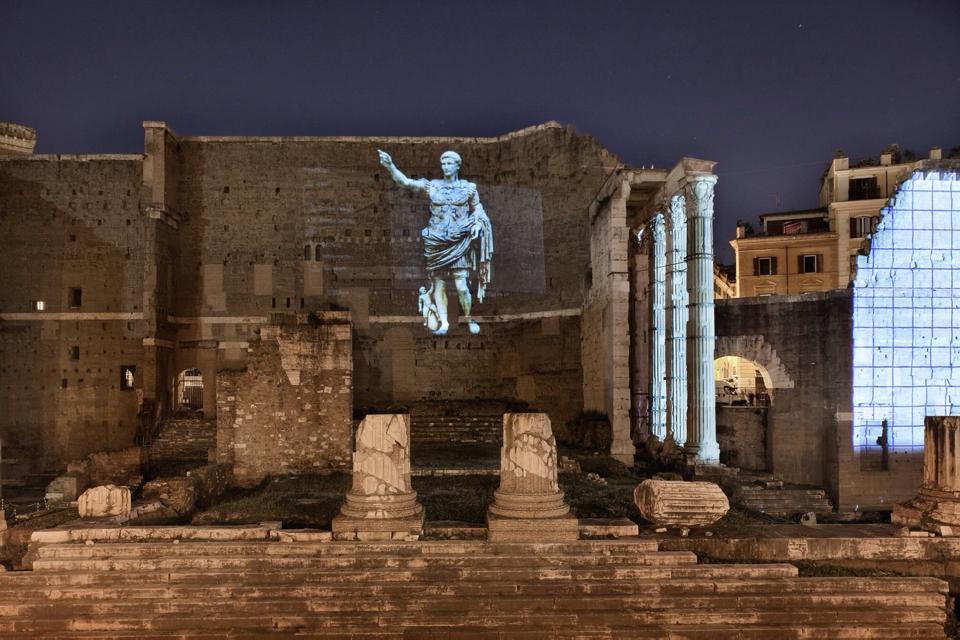 Children was so curious about Italian history, shocked by the fact that they were standing on the very spot where Julius Caesar and Augustus and others passionately made speeches more than 2000 years ago.
Children was so curious about Italian history, shocked by the fact that they were standing on the very spot where Julius Caesar and Augustus and others passionately made speeches more than 2000 years ago.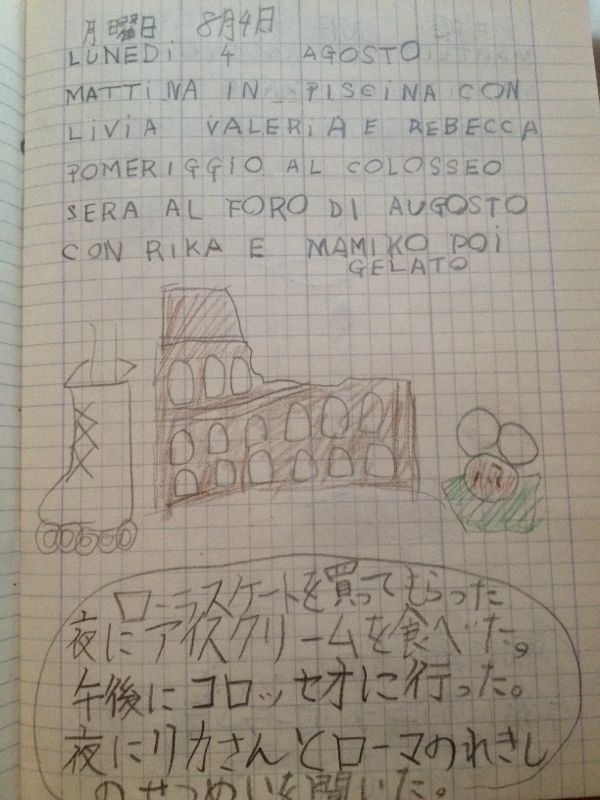 By the time a few weeks passed, all kids overcame jet-lag, home sick, started understanding Italian languages, spoke Italian well enough to fight with other Italian kids.
By the time a few weeks passed, all kids overcame jet-lag, home sick, started understanding Italian languages, spoke Italian well enough to fight with other Italian kids.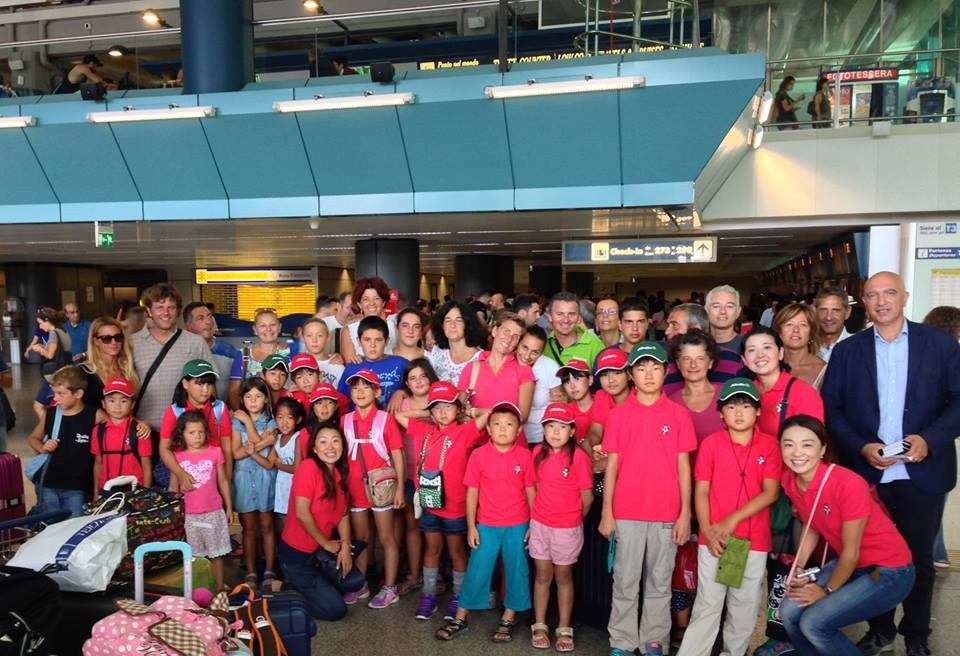 On final day at Rome airport, tearful farewell with Italian families
On final day at Rome airport, tearful farewell with Italian families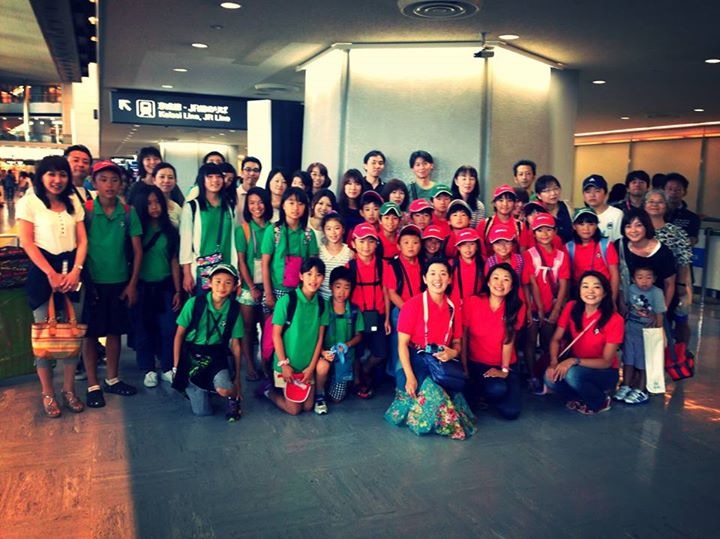 We, energy fully charged Fukushima kids and NADIA staffs, all came back to Narita airport safely with bronze skin and big smile!
We, energy fully charged Fukushima kids and NADIA staffs, all came back to Narita airport safely with bronze skin and big smile!
